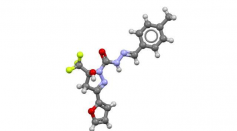crystallization

Thousands of Medically Relevant Crystals 'Conglomerates' Can Aid Chemists in Forming New Pharmaceuticals by 37% [Study]
Nanoparticles Can Save Historical Structures from Potentially Crumbling Through the Years
Solvent Baths Promise Better Perovskite Crystals and Better Solar Energy
How One Innovation May Change the Solar Energy Game Forever
Most Popular

How Technology Is Changing the Real Estate Industry?

Study Reveals High Turnover in Scientific Research Careers: What This Means for Future Scientists

How a Plant-Based Diet Can Protect Against Breast Cancer: Insights from Nutrition Research

Why It's So Difficult to Lose Weight: The Biological Explanation Behind Obesity





